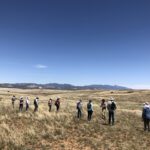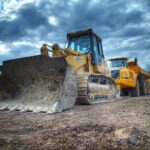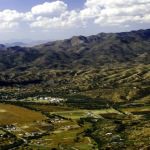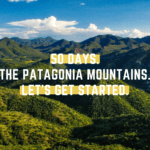September 2017
POTENTIAL IMPACT OF MINING IN PATAGONIA MOUNTAINS: Para Review of AMI Preliminary Economic Assessment
Early in May, Arizona Mining Inc. (AMI) released its Preliminary Economic Assessment (PEA). As a Canadian company, part of the Augusta Group in Vancouver BC, trading on the Toronto Stock Exchange, AMI is guided by National Instrument 43-101 Standards of Disclosure for Mineral Projects which defines the information that can be provided in a PEA and “. . . it can only demonstrate the potential viability of mineral resources, not the technical or economic viability of a project.”
Some of the items in the PEA relate to water, hazardous materials and truck traffic: “For the PEA it was ASSUMED [emphasis added] an adequate water resource from ground water wells is available on the mine property.” p 201
WATER USE: The project projects to use 650 gallons of water per minute. If the mine goes into production, it is proposed to operate 24 hours, 7 days a week. AMI’s projections are for 650 gallons of water per minute. This translates to 936,000 gallons per day, 6,552,000 gallons per week, 27,846,000 gallons per month, 334,152,000 gallons of water annually.
MINING METHODS: “After mineral extraction, approximately 50% of the tailings will be sent back underground as backfill . . .” p7
“The recommended mining method is sub-level open stoping.” p 8 “The underground mine is relatively deep and has a large mining footprint.” p 17 The average drill depth in 2016-17 was 4,094 feet and the average depth of the Taylor holes is 3,725 feet. “Mining activities will be fully mechanized and large modern trackless mobile equipment will be employed throughout.” p 140
Two of the chemicals (reagents) to be used on-site are known to be HIGHLY toxic: sodium cyanide and ammonium nitrate, the explosives use for blasting. AMI plans to do extensive blasting. “This would require approximately 143 Tons / month of explosive requiring 7 transport deliveries per month. Peak consumption is in Year 6 and the maximum quantity of explosives required is 2,460 tons per year, or 205 tons per month, requiring 10 transport deliveries per month.” p 165.
SUPPLY AND CONCENTRATE TRUCKS: (assumption is each truck carries 40,000 pounds) The estimates for monthly truck traffic (estimates are ONE WAY so double the number to get road traffic.
- ammonium nitrate deliveries p 165 7-10 per month
- sodium cyanide deliveries p 205 1-2 per month
- other chemical deliveries p 205 40 per month
- shipment of concentrates p182 & 183 1,946 per month
(Assumption: zinc and lead concentrates are material that would be shipped if not shipped as concentrates than number would be larger)
UPDATE: At the AMI Meeting on September 12, Don Taylor indicated that the zinc and lead concentrates would be shipped as concentrates.
The industrial, BIG truck traffic totals an estimated 3,996 trucks per month or 133 BIG trucks per day on Harshaw road any time of the day or night. PLUS 264 employees who will travel in buses or personal vehicles.
EMPLOYEE TRANSPORTATION…p148
- 264 employees per day 7,920 per month OR AMI suggests employees will be bused from Nogales, Sierra Vista and Tucson which would be 180 buses per month (assumption buses are full and carry 50 people)
UPDATE: Don Taylor reported at the AMI Meeting on September 12th that AMI is not looking at the busing as the best option because it would not encourage people to support local businesses such as grocery stores and gas stations. It was not clear whether this option will be considered in the Feasibility Study. This is an area that needs public comment.
TRUCK ACCESS ROADS:
“Three access routes to the mine property were reviewed. Each route is along existing improved and unimproved roadways. The preferred alternative is to upgrade the existing Harshaw road.” “These potential new improvements or any operating restrictions could arise through the necessary coordination with the town of Patagonia, and possibly others.” p 163
UPDATE: At the AMI Meeting on September 12, Don Taylor showed a slide that showed 3 possible truck routes, including Harshaw Road, and he indicated that all 3 routes would be considered in the feasibility study. This is an area that needs public comment.
As stated twice in the PEA (p 15 and p 212): “The PEA is preliminary in nature. It includes inferred Mineral Resources that are considered too speculative geologically to have the economic considerations applied to them that would enable them to be categorized as Mineral Reserves. There is no certainty that the PEA will be realized.”
Paying attention to the potential impacts on the quantity and quality of water, the noise and effects from the use of explosives, to the effects of increased commuter and industrial transport vehicles is critical. These factors have potential impacts on Patagonia’s
- quality of life;
- quality and quantity of the water supply;
- attraction to visitors who are a source of economic viability for many Patagonia businesses;
- growth of small farms;
- and town infrastructure such as roads and wells.
It is also important to weigh whether the economic opportunities and challenges AMI might bring to the Patagonia community are worth risking the impacts to the environment, water quality and quantity, as well as quality of life for many years to come.
There are many permits and compliances for AMI to put into place and they are still in their Work Plan and Feasibility Study phase, so now is the time to get the facts about the real impacts and opportunities for the Patagonia Community. In PARA’s view, the beauty and biological diversity of our region and the significant role that plays in the quality of life and available opportunities for our community is of critical importance to protect.
Don Taylor commented several times in the AMI meeting on September 12 that the company is committed to doing the right thing for Patagonia and for the environment.
We can help AMI to keep that commitment.
# # # #
A hard copy of the PEA is available at the Patagonia Library. The 239 page PEA link:
https://www.arizonamining.com/_resources/technical-reports/Arizona-Mining-Technical-Report.pdf









